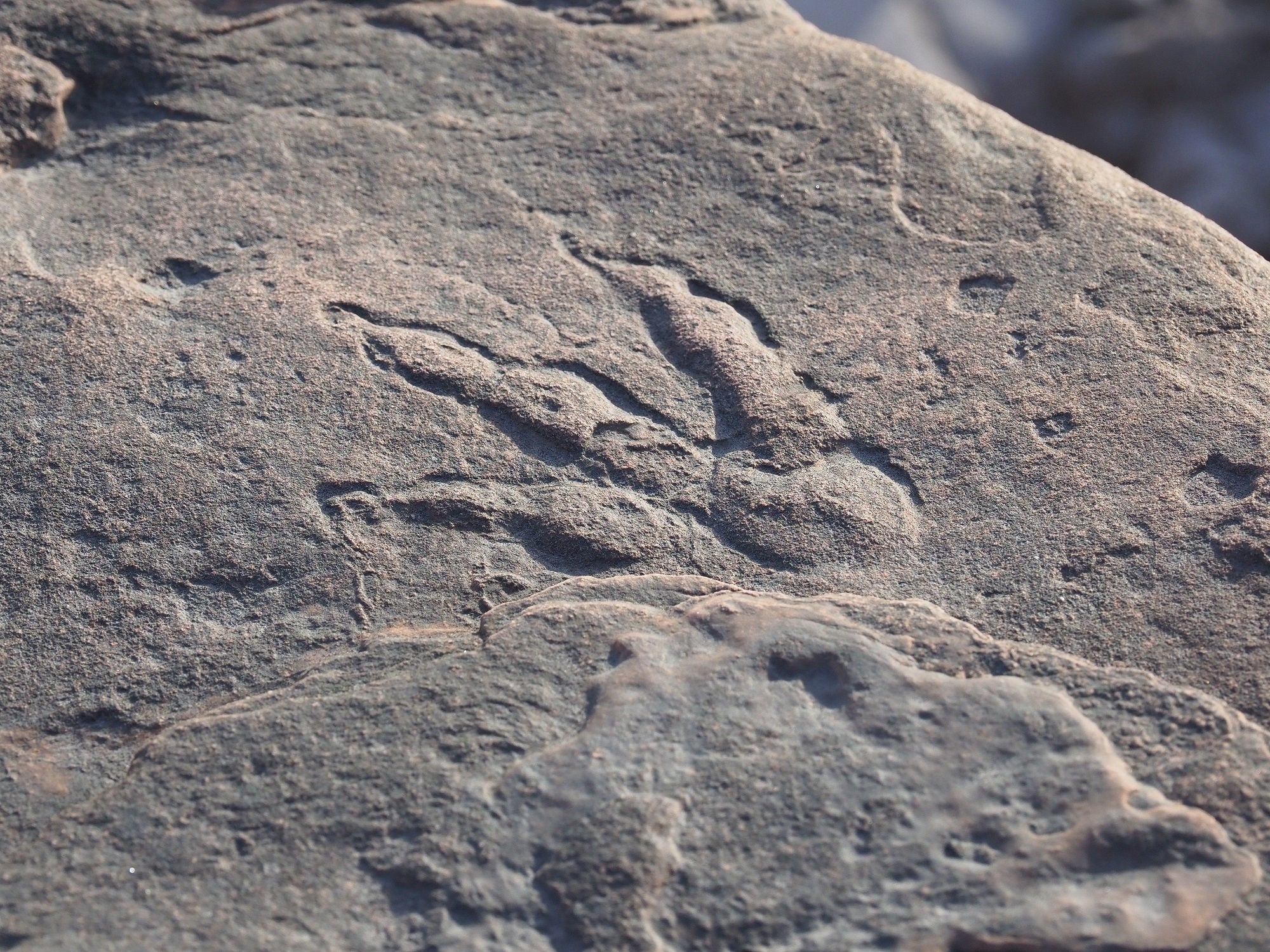Dinosaur footprint discovered on Welsh beach by four-year-old girl
National Museum Wales palaeontology curator Cindy Howells described it as ‘the best specimen ever found on this beach’

Your support helps us to tell the story
From reproductive rights to climate change to Big Tech, The Independent is on the ground when the story is developing. Whether it's investigating the financials of Elon Musk's pro-Trump PAC or producing our latest documentary, 'The A Word', which shines a light on the American women fighting for reproductive rights, we know how important it is to parse out the facts from the messaging.
At such a critical moment in US history, we need reporters on the ground. Your donation allows us to keep sending journalists to speak to both sides of the story.
The Independent is trusted by Americans across the entire political spectrum. And unlike many other quality news outlets, we choose not to lock Americans out of our reporting and analysis with paywalls. We believe quality journalism should be available to everyone, paid for by those who can afford it.
Your support makes all the difference.A dinosaur footprint that is “the finest impression found in Britain in a decade” has been discovered on a beach in Wales by a four-year-old girl.
Scientists believe that the 220 million-year-old footprint, spotted by Lily Wilder at Bendricks Bay, Barry, could help us better understand how dinosaurs walked.
It cannot be determined exactly what type of dinosaur left the print, but it is 10cm long and likely to be from a 75cm “slender animal” which would have walked on its two hind feet and hunted small animals and insects.
National Museum Wales’s palaeontology curator Cindy Howells described it as "the best specimen ever found on this beach".
Specimens found at Bendricks Bay in the past are thought to be from more crocodilian-type reptiles rather than dinosaurs, with the beach being described by the South Wales Group of the Geologists' Association as "the best site in Britain for dinosaur tracks of the Triassic Period".
"It was Lily and Richard (her father) who discovered the footprint," said mum Sally Wilder.
"Lily saw it when they were walking along and said 'daddy look'. When Richard came home and showed me the photograph, I thought it looked amazing.
"Richard thought it was too good to be true. I was put in touch with experts who took it from there."
Special permission was received from Natural Resources Wales to legally remove the footprint, with the fossil extracted this week and taken to the National Museum Cardiff where it will be preserved.
"Its spectacular preservation may help scientists establish more about the actual structure of their feet as the preservation is clear enough to show individual pads and even claw impressions," National Museum Wales said in a statement.



Join our commenting forum
Join thought-provoking conversations, follow other Independent readers and see their replies
Comments